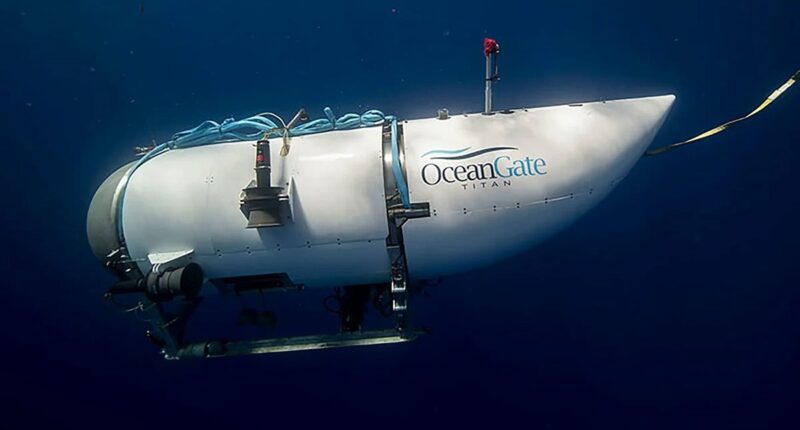Share this @internewscast.com

The company behind the fatal Titan submersible voyage had ‘critically flawed’ safety practices and a toxic workplace culture, a new report into the disaster has claimed as the family of two victims called for ‘meaningful reform’ to industry standards. Jason Neubauer, chair of the Coast Guard Marine Board, said in light of a report released Tuesday after two years of investigation that the ‘marine casualty and the loss of five lives was preventable’. The board found that the ‘primary contributing factors’ in the Titan’s implosion were ‘inadequate design, certification, maintenance and inspection process’.

OceanGate’s Titan submersible imploded during a June 2023 dive to the Titanic, killing five people, including CEO Stockton Rush. More than two years on, a report spanning 335-pages concluded that the company ‘failed to properly investigate and address’ known issues, and pointed to worrying trends behind the scenes. The board found that OceanGate failed to properly investigate and address ‘known hull anomalies’ identified in 2022. It said the Titan’s real time monitoring system produced data that ‘should have been…acted on’ a year before the tragedy. The Coast Guard determined that the Titan’s implosion was ultimately caused by the loss of structural integrity of its hull, resulting in the ‘instantaneous’ death of everyone on board.

‘The lack of both third-party oversight and experienced OceanGate employees on staff during their 2023 Titan operations allowed OceanGate’s Chief Executive Officer to completely ignore vital inspections, data analyses, and preventative maintenance procedures, culminating in a catastrophic event,’ the report concluded. The board also cited ‘a toxic workplace culture at OceanGate, an inadequate domestic and international regulatory framework for submersible operations and vessels of novel design, and an ineffective whistleblower process’.

The Coast Guard convened its highest level of investigation in the aftermath of the 2023 implosion off Canada. The disappearance of the Titan led to a search that garbed worldwide attention. The submersible disaster has led to lawsuits and calls for tighter regulation of the developing private deep sea expedition industry. In its report, the board of investigation made 17 safety recommendations ‘aimed at strengthening oversight of submersible operations, improving coordination among federal agencies and closing gaps in international maritime policy’.

Its conclusions focused on how OceanGate had failed to address the ‘fundamental engineering principles’ needed to dive in an ‘inherently hazardous environment’. The submersible was designed to be able to reach some 4,000 meters below sea level – two hundred deeper than the wreck of the Titanic. The U.S. Navy detected sounds ‘consistent with an implosion’ shortly after the sub lost contact at around 3,500 meters below sea level. The submersible was designed to withstand the enormous pressure put on it at such depths. But according to the Coastguard’s assessment, the Titan’s carbon fibre construction led to flaws testing its integrity. ‘Vital’ inspections and data analyses were also then overlooked and ‘completely ignored’, it found.

The report goes on to take aim at perceived failures of company culture, lambasting a ‘toxic workplace environment’ at OceanGate. It claimed the company used the firing of staff to dissuade them from whistleblowing safety concerns. The report cites ‘an experienced underwater explorer and submersible pilot’ hired to pilot OceanGate’s ANTIPODES, who suggested that ‘the culture of OceanGate was one of “safety is not important”‘. On one dive years prior, Mr Rush was alleged to have told the experienced pilot to ‘sit the dive out so he could take his “rich friends” on the dive’, the report says.

During the project, OceanGate had an incident that damaged the ANTIPODES, causing approximately $10,000 worth of damage to the vessel. During another dive in 2015, the CYCLOPS I experienced a malfunction. A Near Miss Report flagged how the starboard hatch latch mechanism became stuck and unable to fully engage while still at the dock. The mission nonetheless went ahead ‘without 100% consensus from the group as to the safety of the partially latched starboard hatch.’

‘While the functional aspect of hatch engagement was deemed not to pose a safety risk, the absence of team consensus before proceeding was considered a critical procedural failure,’ the report assessed. ‘The pressure to proceed, influenced by the pilot’s dual role as CEO and the presence of VIP guests, created a “get it done” mentality that undermined safety practices.’








